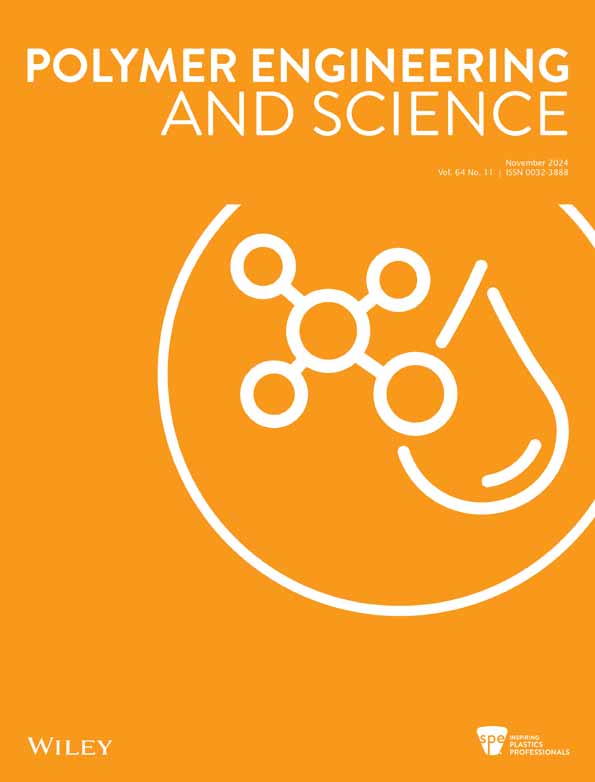Frontal polymerization for UV‐ and thermally initiated EPON 826 resin
IF 3.2
4区 工程技术
Q2 ENGINEERING, CHEMICAL
引用次数: 0
Abstract
用于紫外线和热引发 EPON 826 树脂的正面聚合反应
正面聚合在补充直接写墨等增材制造工艺方面具有巨大潜力,因为与印刷速度同步的连续固化可以克服下垂等问题。为了研究将正面聚合纳入潜在印刷工艺的可能性,我们开发了一种可正面聚合的 DGEBA 环氧树脂,既可用于紫外线引发,也可用于热引发。在两种引发方法中,仅通过正面聚合就可观察到起始玻璃转化温度为 150°C 的完全转化。结果表明,热行为与所使用的引发辐照度或温度的关系不大,而与树脂中引发剂浓度的关系更大。通过改变引发剂浓度和固化条件,可最大限度地提高机械性能,达到 75 兆帕的拉伸应力和 1.2 兆帕-m1/2 的 K1C。事实证明,该树脂的货架稳定性很好,在室温下存放 12 周后粘度没有发生变化。亮点 使用 RICFP 对 EPON 826 进行正面聚合 使用了含有二芳基碘阳离子引发剂的四硼酸酯 12 周后仍保持稳定并可聚合 使用紫外线引发剂对树脂进行印刷和正面固化。
本文章由计算机程序翻译,如有差异,请以英文原文为准。
求助全文
约1分钟内获得全文
求助全文
来源期刊

Polymer Engineering and Science
工程技术-高分子科学
CiteScore
5.40
自引率
18.80%
发文量
329
审稿时长
3.7 months
期刊介绍:
For more than 30 years, Polymer Engineering & Science has been one of the most highly regarded journals in the field, serving as a forum for authors of treatises on the cutting edge of polymer science and technology. The importance of PE&S is underscored by the frequent rate at which its articles are cited, especially by other publications - literally thousand of times a year. Engineers, researchers, technicians, and academicians worldwide are looking to PE&S for the valuable information they need. There are special issues compiled by distinguished guest editors. These contain proceedings of symposia on such diverse topics as polyblends, mechanics of plastics and polymer welding.
 求助内容:
求助内容: 应助结果提醒方式:
应助结果提醒方式:


